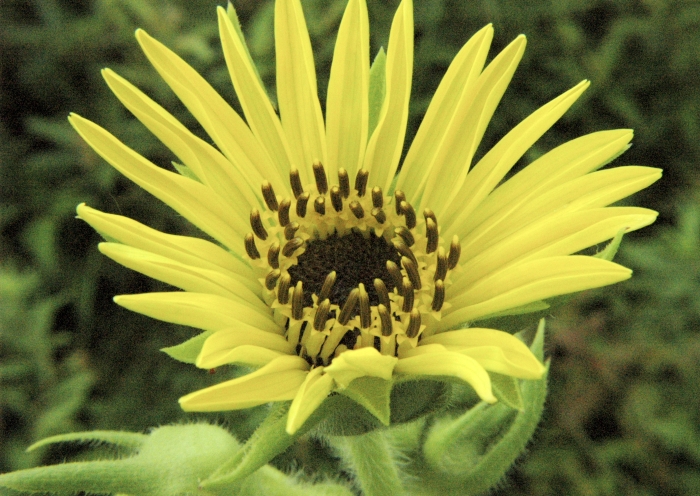Compass Plant
(Silphium laciniatum)
Compass Plant (Silphium laciniatum)
/
/

Frank Mayfield
CC BY-SA 2.0
Image By:
Frank Mayfield
Recorded By:
Copyright:
CC BY-SA 2.0
Copyright Notice:
Photo by: Frank Mayfield | License Type: CC BY-SA 2.0 | License URL: https://creativecommons.org/licenses/by-sa/2.0 | Uploader: Tortie tude | Publisher: Wikimedia Commons | Title: Silphium_laciniatum.jpg | Notes: |

















































Estimated Native Range
Summary
Silphium laciniatum, commonly known as Compass Plant, is a deciduous perennial herb native to tallgrass prairies and glacial plains in the Central United States, extending into Ontario. It is well-adapted to the open, sunny environments of its native habitat, where it plays a role in supporting pollinators and wildlife. The Compass Plant can reach heights of 2 to 3 meters with a deep taproot system that allows it to access water during dry periods. Its rough-haired stems are topped with large, showy yellow flowers from July to September, with each flower head consisting of 27 to 38 yellow ray florets surrounding numerous yellow disc florets. The back of the flower head features layers of rough, glandular phyllaries. The fruit is a cypsela, nearly 2 cm long, tipped with a pappus of two short awns, which are consumed by various birds and mammals.
The Compass Plant is valued for its striking vertical presence in the garden, its bright yellow flowers, and its ability to attract wildlife. It is often used in prairie restoration projects, naturalized plantings, and as a specimen in native plant gardens. It thrives in full sun and is tolerant of a range of soil drainage conditions, from slow to fast, but prefers well-drained soils. While it requires medium amounts of water, its deep roots make it relatively drought-tolerant once established. Gardeners should note that due to its size and deep roots, the Compass Plant is best suited for larger spaces and may not be suitable for small gardens.CC BY-SA 4.0
The Compass Plant is valued for its striking vertical presence in the garden, its bright yellow flowers, and its ability to attract wildlife. It is often used in prairie restoration projects, naturalized plantings, and as a specimen in native plant gardens. It thrives in full sun and is tolerant of a range of soil drainage conditions, from slow to fast, but prefers well-drained soils. While it requires medium amounts of water, its deep roots make it relatively drought-tolerant once established. Gardeners should note that due to its size and deep roots, the Compass Plant is best suited for larger spaces and may not be suitable for small gardens.CC BY-SA 4.0
Plant Description
- Plant Type: Herb
- Height: 5-9 feet
- Width: 1.5-3 feet
- Growth Rate: Slow
- Flower Color: Yellow
- Flowering Season: Summer, Fall
- Leaf Retention: Deciduous
Growth Requirements
- Sun: Full Sun
- Water: Medium
- Drainage: Slow, Medium, Fast
Common Uses
Bee Garden, Bird Garden, Butterfly Garden, Drought Tolerant, Low Maintenance, Showy Flowers, Street Planting
Natural Habitat
Tallgrass prairies and glacial plains in the Central United States and Ontario
Other Names
Common Names: Compassplant, Polarplant, Pilotweed, Rosinweed, Kompasspflanze, Kompassört
Scientific Names: , Silphium laciniatum, Silphium laciniatum var. robinsonii, Silphium laciniatum var. laciniatum, Silphium gummiferum, Silphium spicatum,
GBIF Accepted Name: Silphium laciniatum L.